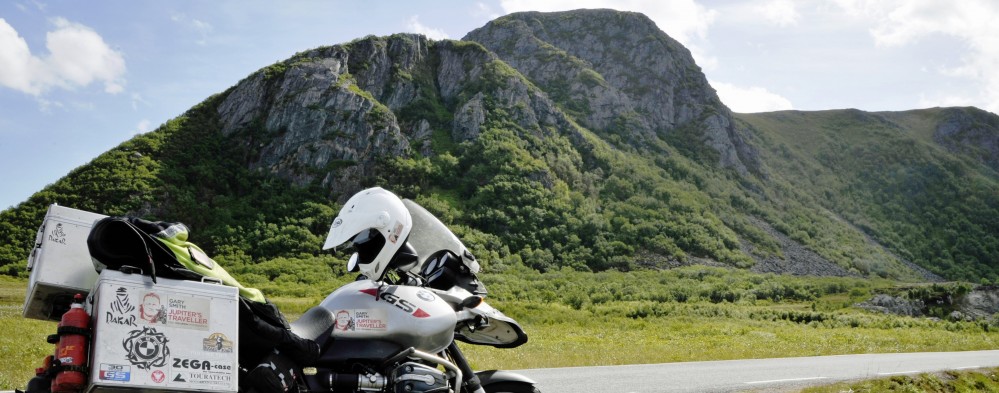Tirpitz was the largest battleship in the German Kriegsmarine and a sister to the Bismarck, built in 1939 and named after the deputy admiral Alfred von Tirpitz Freiherr. In March 1943 Turpitz was berthed in Kåfjord in Alta with the role of threatening Allied convoy traffic in the Barents Sea. The Germans built a massive navel base in Altafjord, as in addition to Tirpitz the battleship Scharnhorst and cruiser Lützow were stationed in Alta – a total of 20,000 German troops lived the in areas I have been exploring on the bike over the last two days. It has been fascinating to see the object of attraction for Easy Elsie, stumble across historic artefacts and sobering to remember the tragic loss of life on both sides in this conflict.
Monthly Archives: June 2015
A walk in the woods with Easy Elsie
On the 29th October 1944, Easy Elsie took off from Lossiemouth, one of 37 Lancasters on a bombing run to hunt and sink the Battleship “Tirpitz”. The round trip was in excess of 2250 miles so all the Lancasters were modified to reduce weight and these modifications included removal of the mid-upper turrets and other non-essential equipment, plus the installation of additional fuel tanks giving a capacity of 2406 gallons. At the time of the attack, cloud had hidden the Tirpitz, so all the Lancasters dropping their Tallboy bombs on the estimated position, but no direct hits were achieved. Easy Elsie attempted six separate bombing runs over the target before releasing its bomb missing the Battleship, but was damaged by flak. Losing fuel, the crew and Pilot set course for Sweden, releasing a return to Lossiemouth was not practicable and after jettisoning weapons and more fuel near Porjus, Flying Officer Carey skilfully landed the Lancaster in a clear section of forest. Although the landing gear dug into the soft bog the Lancaster stood end up before falling back – allowing all the crew to escape safely – they were subsequently repatriated to the UK.

Porjus Northern Lights
Still riding north on my way to Nordkapp, I have stopped for a couple of nights in the little town of Porjus. Famous for a whole host of reasons most noticeably the resting place of Easy Elsie, the massive hydro station, and during the winter… an active sight for northern light spotting. I am lucky enough to be staying the self catering lodges owned by Patricia Cowern, the renown nature and northern lights photographer – the images below are Patricia’s – you can view her work and make a booking via Arctic Colour. Also worth a visit is the Laponia Shop a great opportunity to see traditional Sámi crafts and meet Asbjorn and his parents.

Glacial Erratics or Reindeer?
Riding north on the E45 this afternoon south of Jokkmokk, I glimpsed something white in the eastern forest fringes. The trouble with these northern glacial fields are that the glacial erratics can look like animals, but this was different, so I did a quick turnaround and slowly retraced my steps and I was privileged enough to witness for maybe five minutes, a startling white reindeer and two darker females grazing on the forest floor and eyeing me up with interest. In a few months time, the native Sámi people will gather these reindeers for slaughter. The white reindeer is more often selected for slaughter since they are said to be weaker and an easier prey for predators – I prefer the old adage that says that seeing the white reindeer means luck… after all I have at least another 6000km to ride.
Beast of Burden
Why ride a bike… the connection to place, to the land, the wind, the sun, stars, the moon… it sounds romantic, but it’s true – the visceral experience of motion, of moving through time on some amazing machine – a few cars touch on it, but not too many compared to motorcycles. I always felt that any motorcycle journey was special – Antoine Predock

